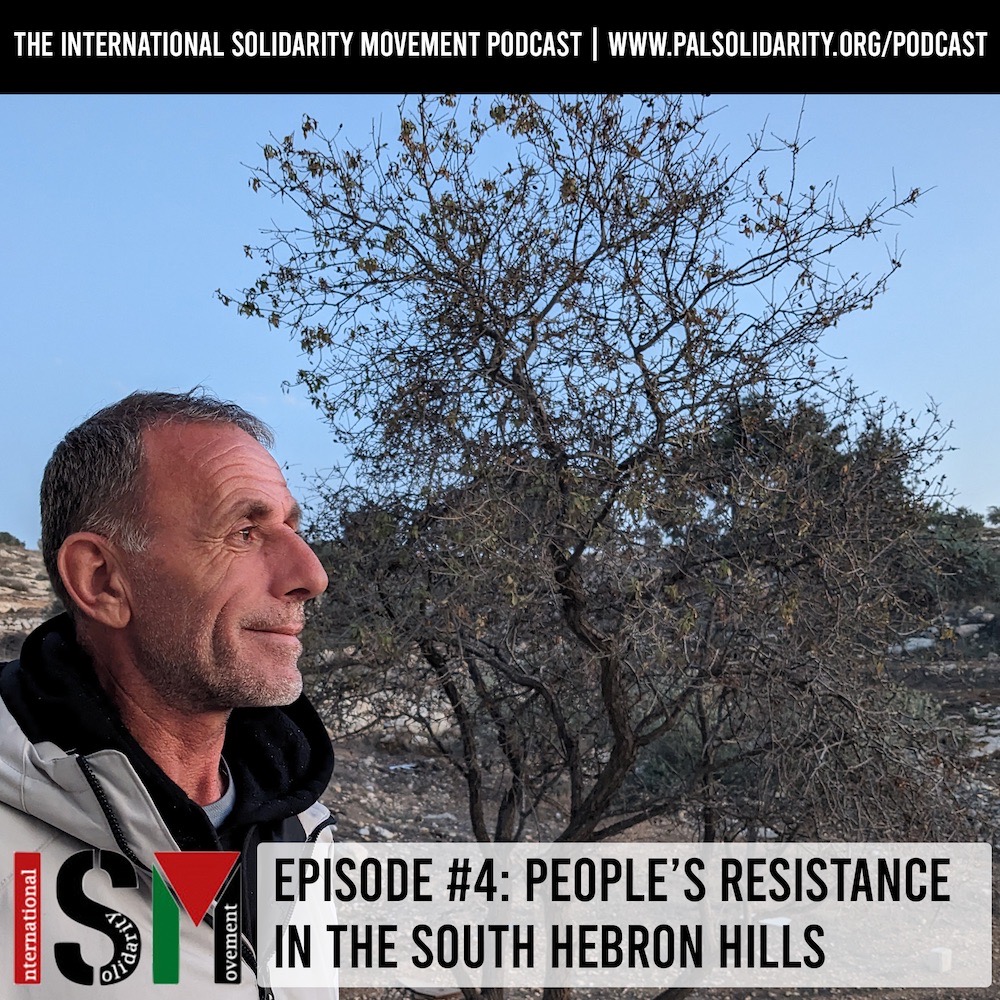Tag: At-Tuwani
-
The International Solidarity Movement podcast episode five: ISM Volunteer Experiences on the Frontlines
In the fifth episode of the International Solidarity Movement podcast we are joined in the village of At-Tuwani by two ISM volunteers – Herbie and Maria – who both spent several months volunteering as internationalists in Palestine. They tell us from a personal perspective what it’s like to be an international volunteer in Palestine, and…
-
The International Solidarity Movement podcast episode four: People’s Resistance in the South Hebron Hills
In the fourth episode of the International Solidarity Movement podcast we speak to Hafez Hurreini, a veteran organiser from the village of At-Tuwani. Hafez is the father of Sami, who we interviewed in episode three. When we did our interview, Hafez had a metal pin in his arm after a brutal attack by settlers in…
-
ISM Call to Action: Save Masafer Yatta!
The International Solidarity Movement is calling all activists and supporters to take urgent action against Israel’s ethnic cleansing of the Masafer Yatta region in the occupied West Bank. What is Masafer Yatta?: Masafer Yatta is a rural region to the south of Hebron along the southern border of the occupied West Bank. It…



